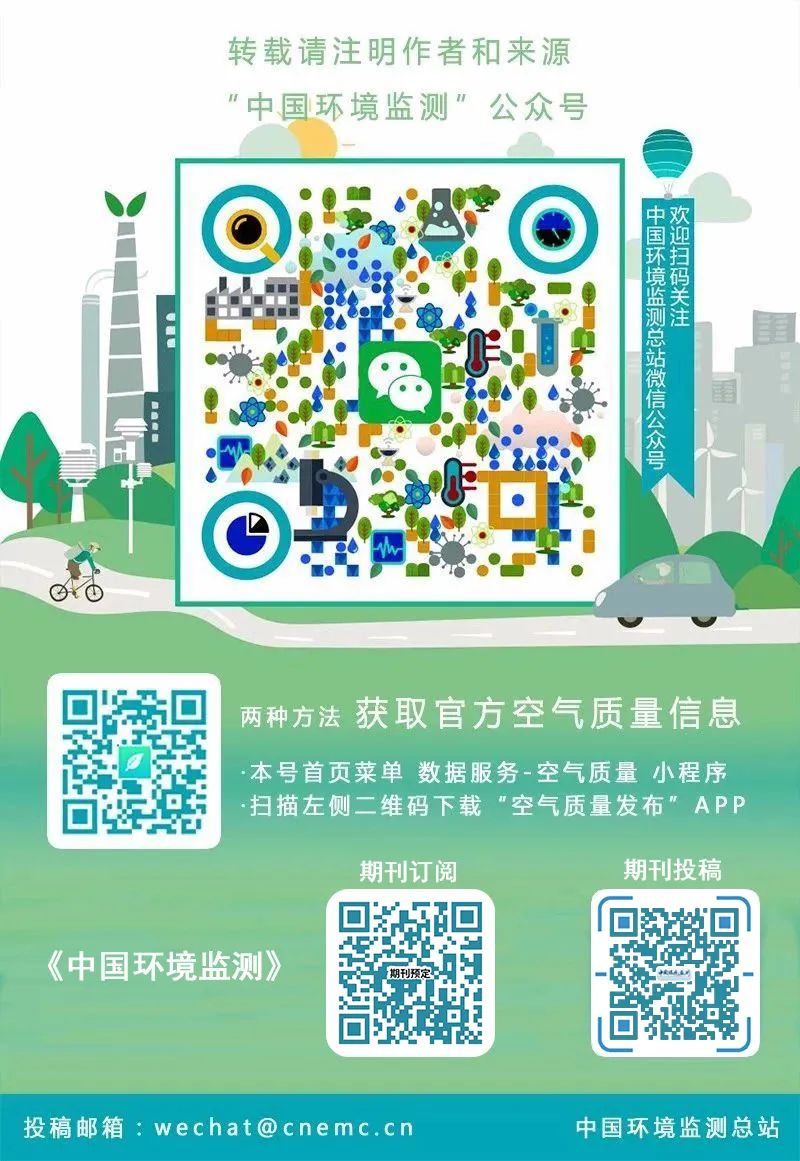
Total words: 2007
Estimated reading time: 2 minutes
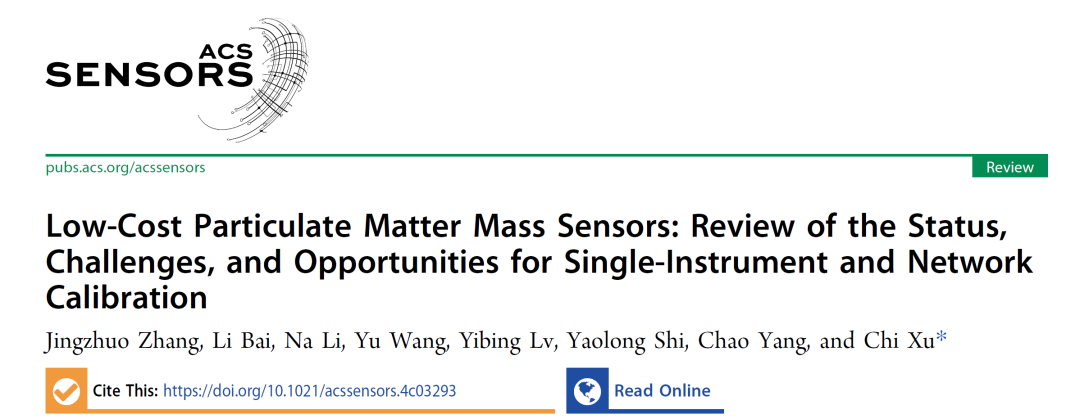
Summary of Findings
Recently, the Quality Control Department (Metrology Center) of the China National Environmental Monitoring Center published a review paper titled “Low-Cost Particulate Matter Mass Sensors: Review of the Status, Challenges, and Opportunities for Single-Instrument and Network Calibration” in the internationally authoritative journal ACS Sensors (JCR Q1, IF=8.3). The article systematically reviews the research progress of calibration technology for low-cost particulate matter sensors (PM2.5LCS), summarizes the main factors affecting sensor measurement results, calibration methods for single sensors and sensor monitoring networks, and proposes future research directions for PM2.5LCS calibration. The study found that humidity, temperature, and particle properties are key factors affecting sensor calibration, with regression analysis and machine learning being commonly used single sensor calibration models. Common methods for monitoring network calibration include early evaluation, homogeneous calibration, and colocated calibration, with the choice depending on regional environmental conditions, particle characteristics, and the number and type of reference instruments. Combining sensor drift monitoring with quality control is an effective method to improve the accuracy of sensor networks. Additionally, future research should strengthen the study of the impact of particulate sensor aging on data quality while exploring higher-performance particulate sensor monitoring network calibration models that do not rely on reference instruments.
Link to the paper, click below to read the original text:
https://doi.org/10.1021/acssensors.4c03293
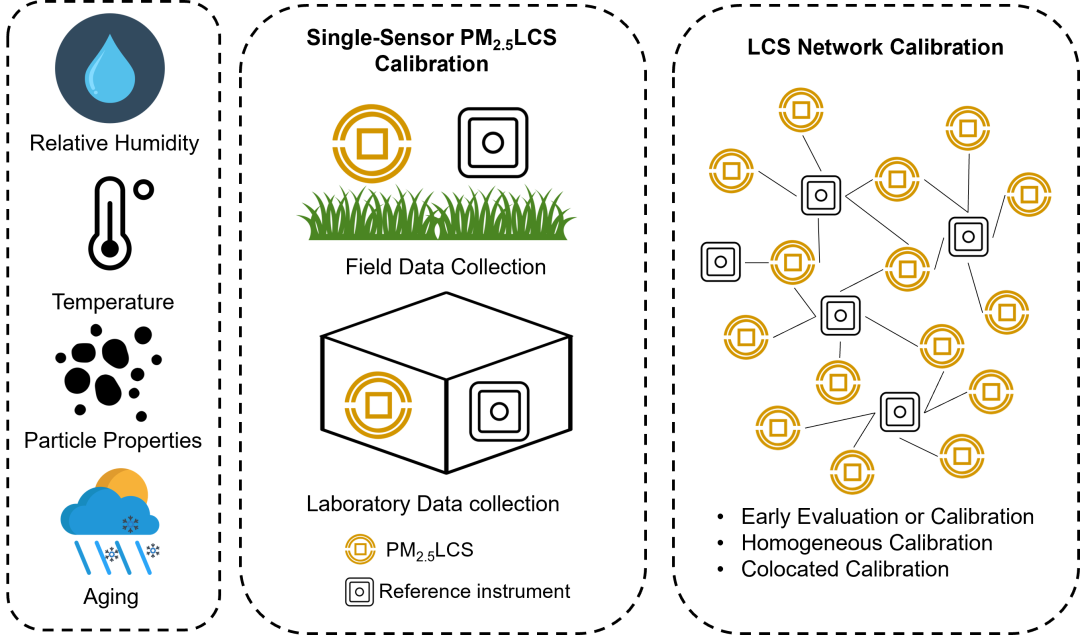
Graphical Abstract
1. Factors Affecting Sensor Measurements
The main factors affecting PM2.5LCS measurement results include temperature, humidity, particle properties, and sensor performance. Among these, due to the hygroscopic nature of particles, their particle size and scattering light intensity change with humidity, affecting the accuracy of sensor measurements. Additionally, the chemical composition, density, shape, and particle size distribution of particles can influence measurement results by altering scattering light intensity. In contrast, temperature and sensor aging have a relatively minor direct impact on the scattering characteristics of particles but can affect the measurement performance of sensor components. Furthermore, larger particles may deposit during transport from the sensor inlet to the measurement area, leading to underestimation of their concentration.
2. Single Device Calibration
Calibration of a single PM2.5LCS typically involves placing the sensor and a reference instrument (i.e., a reliable PM2.5 monitoring device) in the same environment to obtain comparative datasets for establishing a calibration model. Calibration methods are divided into laboratory calibration and field calibration. Laboratory calibration allows for precise control of environmental conditions and systematic assessment of the impact of various factors on sensor measurements, but it is more costly, and the experimental conditions (e.g., particle properties) may differ from actual environments. Field calibration involves deploying the sensor and reference instrument simultaneously at the sensor’s usage location or in a similar environmental condition to obtain data for constructing the calibration model. However, this model has limited adaptability, and changes in the sensor’s usage location may lead to performance degradation.Field calibration involves deploying the sensor and reference instrument simultaneously at the sensor’s usage location or in a similar environmental condition to obtain data for constructing the calibration model, but this model has limited adaptability, and changes in the sensor’s usage location may lead to performance degradation.

Figure 1: Schematic of Field Calibration

Figure 2: Schematic of Laboratory Calibration
Single sensor calibration models mainly include κ-Köhler humidity calibration, regression analysis, and machine learning, with regression analysis and machine learning being more widely applied. Regression analysis includes linear regression, polynomial regression, and orthogonal regression; machine learning includes random forests, neural networks, Gaussian process regression, and support vector regression. Compared to regression analysis, machine learning typically has higher consistency (higher R2), but the risk of overfitting increases with the amount of data. In terms of calibration variables, temperature and humidity are the most commonly used, while other variables (such as light intensity, wind speed, particle properties, etc.) should be carefully selected based on the deployment environment, as the introduction of irrelevant variables can increase model complexity and reduce fitting performance. The calibration period is usually greater than 7 days to obtain sufficient data; while a longer calibration time (>180 days) can cover a wider range of environmental conditions, it also increases the amount of invalid data.
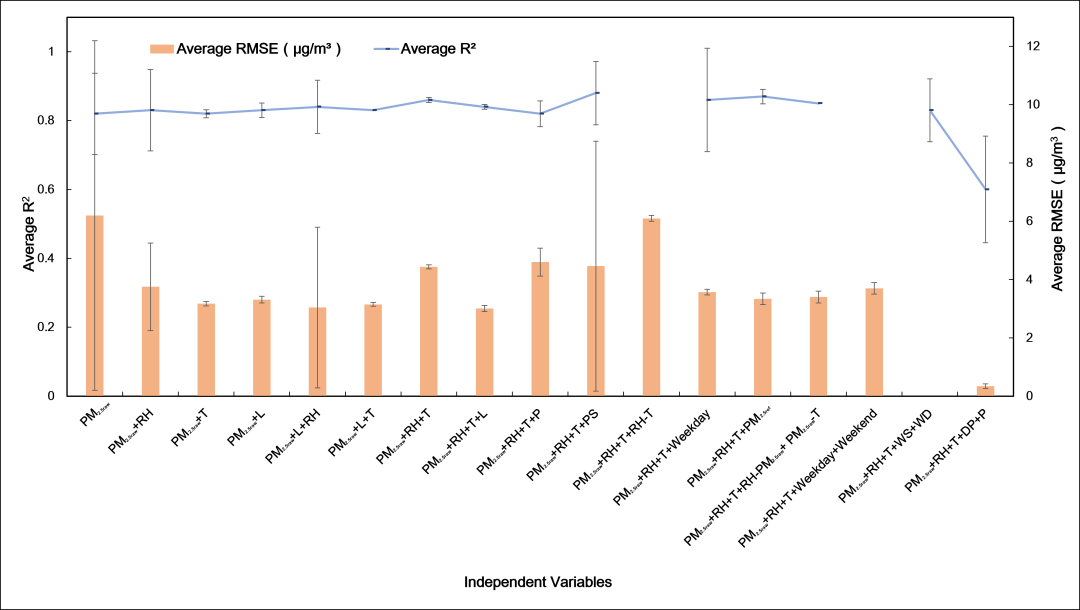
Figure 3: Calibration Model Performance Statistics under Different Calibration Variables (R2 and RMSE)
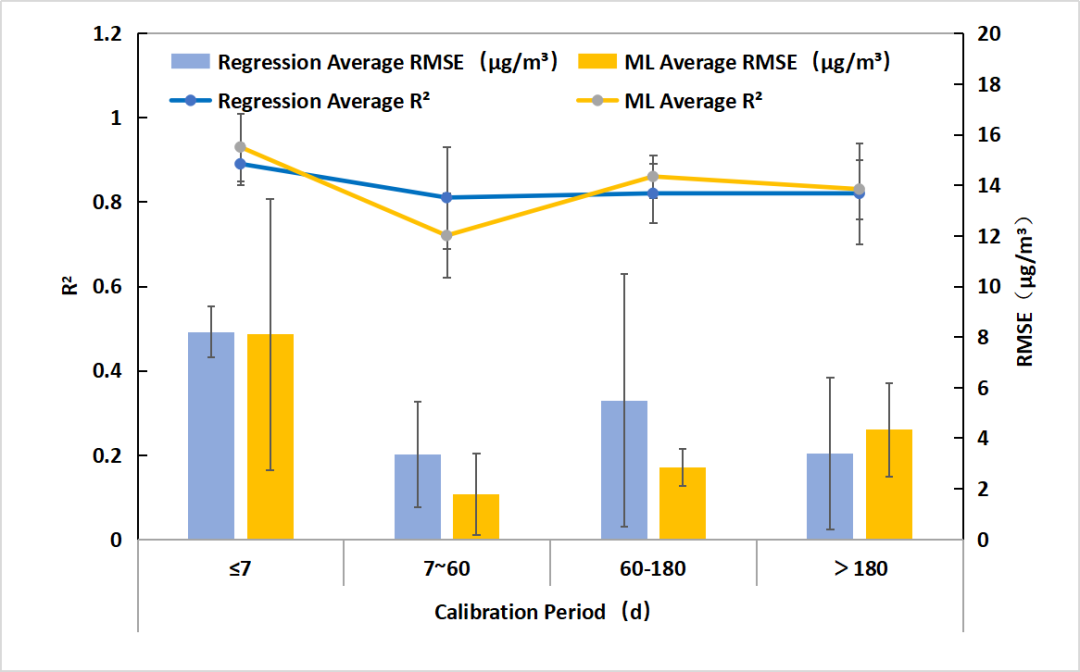
Figure 4: Calibration Model Performance Statistics under Different Calibration Times (R2 and RMSE)
3. Calibration of Sensor Monitoring Networks
The PM2.5LCS monitoring network refers to the deployment of multiple (from dozens to thousands) sensors in a region to provide higher spatiotemporal resolution particulate monitoring data. Currently, network calibration methods are mainly divided into three categories: early evaluation/calibration, homogeneous calibration, and colocated calibration.
Early evaluation/calibration: All sensors are calibrated using reference instruments, with only high-precision sensors participating in network monitoring. This is the simplest calibration method but does not consider sensor aging, failures, or environmental changes, making it difficult to ensure the long-term performance of the monitoring network.
Homogeneous calibration: It is assumed that pollutant concentrations are uniformly distributed in a specific time period (e.g., early morning), and sensors within the network and reference instruments are at the same pollution level, based on which reference instruments are selected to calibrate sensors. This method can be frequently operated to reduce the impact of sensor aging but is difficult to reflect the spatial heterogeneity of real environmental conditions.
Colocated calibration: A sensor network is established in an area with multiple reference instruments, using appropriate methods to select suitable reference instruments for calibration of each sensor in the network. The selection of reference instruments is key to network calibration, currently mainly based on distance and land use type. Studies have shown that combining sensor drift monitoring with daily quality control is an effective method to improve the accuracy of sensor networks.
4. Conclusion and Outlook
This article reviews the existing research on PM2.5LCS and its monitoring network calibration, discussing representative findings to provide references for future research directions in PM2.5LCS calibration. However, due to the diversity of sensor manufacturing technologies, calibration models, and the complexity of environmental conditions and particle properties, this review cannot cover all possible calibration technology results. Future work should develop PM2.5LCS and its monitoring network calibration models under more diverse environmental and technical conditions to obtain more comprehensive and diverse research results, enhancing the replicability and universality of calibration technologies.
Currently, the Metrology Center is gradually building a traceability technology system for sensor monitoring values based on the national key technology research project “Research on Key Technologies for Intelligent Perception of Atmospheric and Surface Water Environment Monitoring in the Beijing-Tianjin-Hebei Region,” conducting research on laboratory calibration and network calibration technologies for particulate sensors to improve the quality of sensor monitoring data, laying a quality foundation for the construction of an integrated perception network for sky, land, and sea.
Contributed by | Quality Control Department
Reviewed by | Xu Chi Cao Jiale
Formatted by | Liu Huimin
